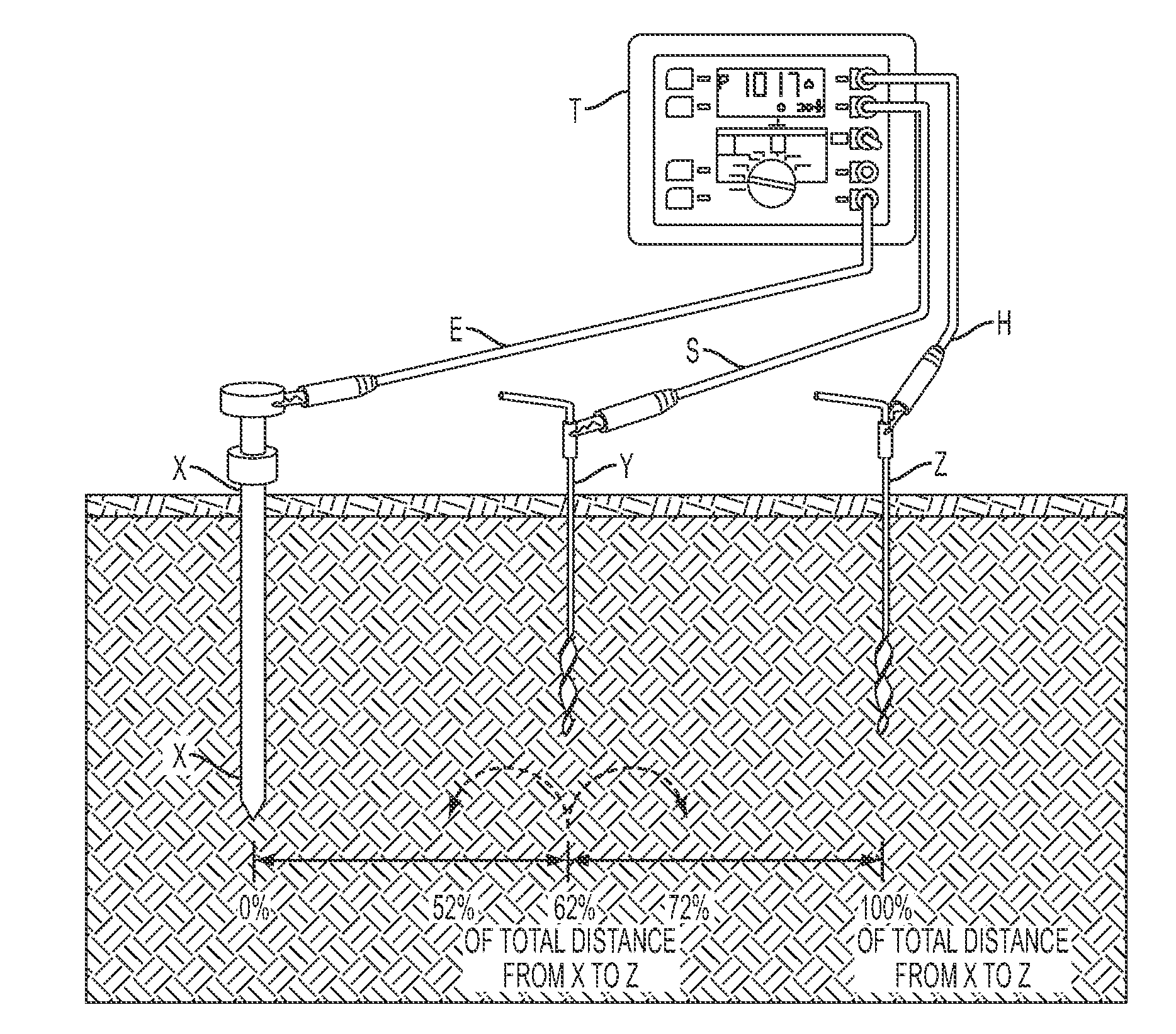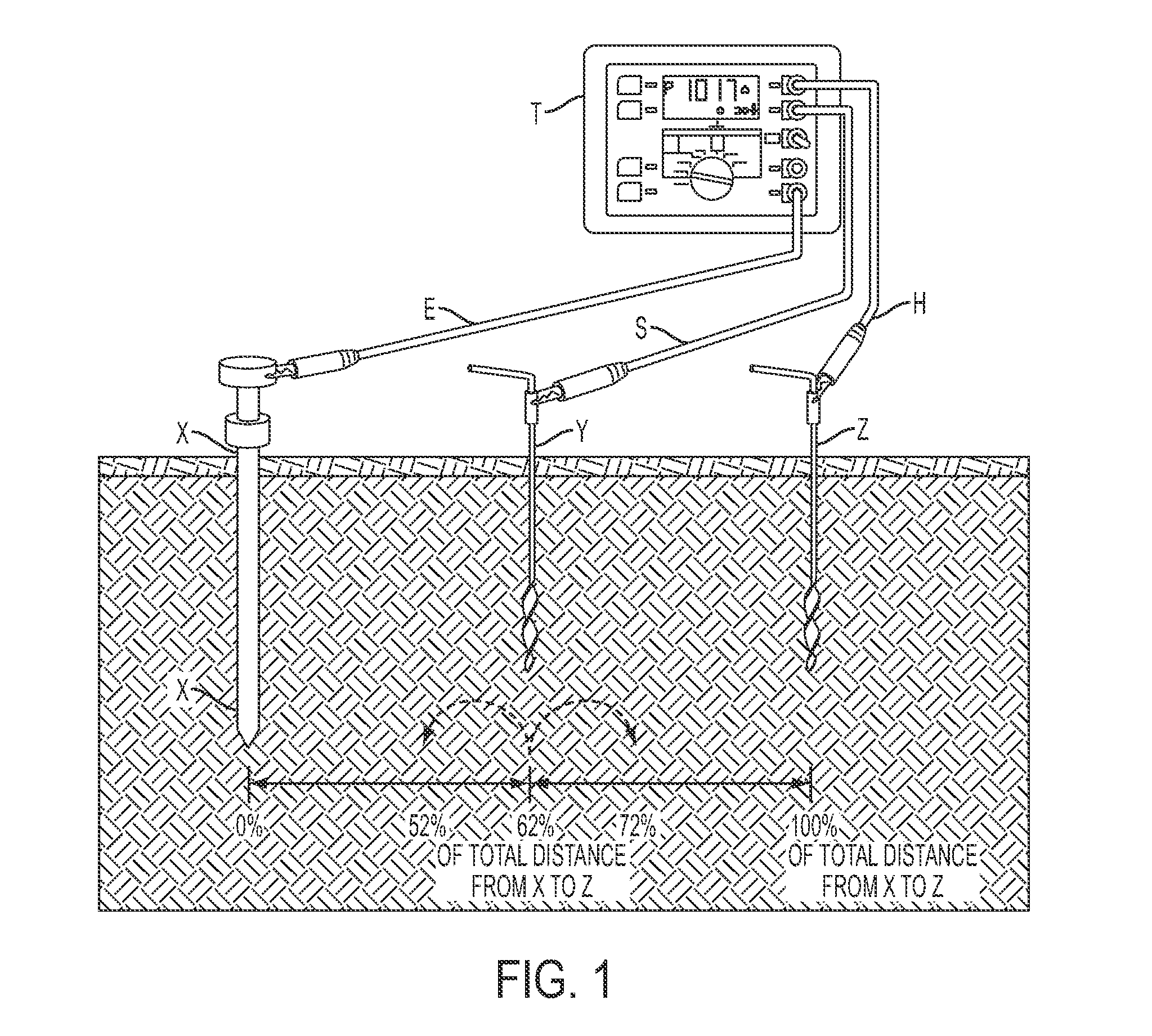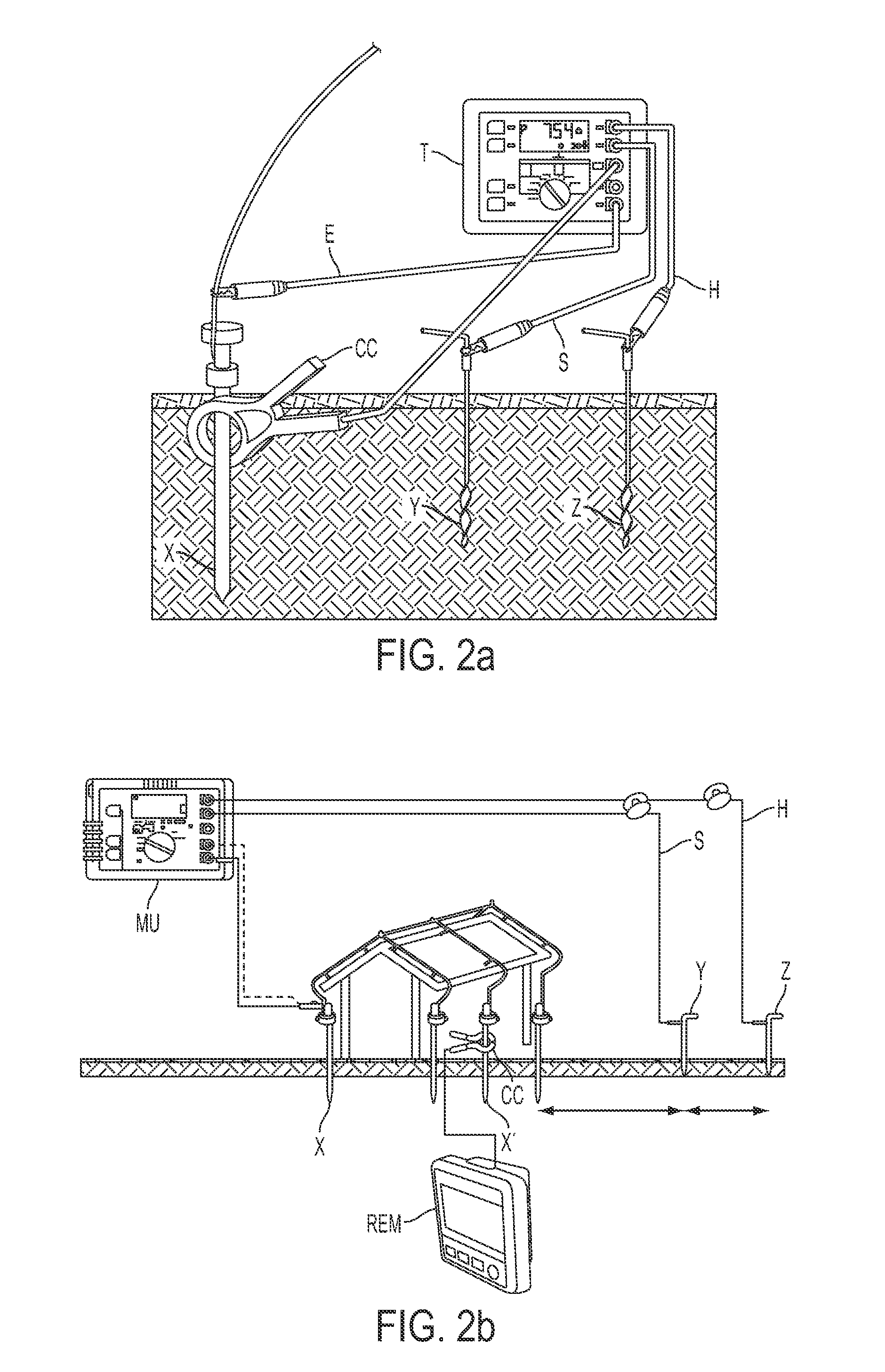Earth ground tester with remote control
a technology of earth ground and remote control, which is applied in the direction of resistance/reactance/impedence, earth resistance measurement, instruments, etc., can solve the problems of harmonic distortion, unintended path finding, and increase the risk of equipment failure, so as to reduce the steps required for setting up the testing device for use, save costs, and reduce the effect of components
- Summary
- Abstract
- Description
- Claims
- Application Information
AI Technical Summary
Benefits of technology
Problems solved by technology
Method used
Image
Examples
Embodiment Construction
[0031]It is to be understood by one of ordinary skill in the art that the present discussion is a description of exemplary embodiments only, and is not intended as limiting the broader aspects of the present invention, which broader aspects are embodied in the exemplary constructions.
Fall-of Potential Measurement
[0032]As described above, one known method of measuring the ability of an earth ground system or an individual electrode to dissipate energy from a site is the so-called “fall-of-potential” test.
[0033]In one example of this test implemented according to the present invention, an earth electrode or ground rod to be tested is disconnected from its connection to the grounding system to avoid obtaining incorrect (i.e., too low) earth resistance measurements caused by parallel grounding. The main unit of the testing device is then connected to the earth electrode X, which may then be used as a first current electrode X. One technique of performing a fall-of-potential test is thre...
PUM
 Login to View More
Login to View More Abstract
Description
Claims
Application Information
 Login to View More
Login to View More - R&D
- Intellectual Property
- Life Sciences
- Materials
- Tech Scout
- Unparalleled Data Quality
- Higher Quality Content
- 60% Fewer Hallucinations
Browse by: Latest US Patents, China's latest patents, Technical Efficacy Thesaurus, Application Domain, Technology Topic, Popular Technical Reports.
© 2025 PatSnap. All rights reserved.Legal|Privacy policy|Modern Slavery Act Transparency Statement|Sitemap|About US| Contact US: help@patsnap.com



